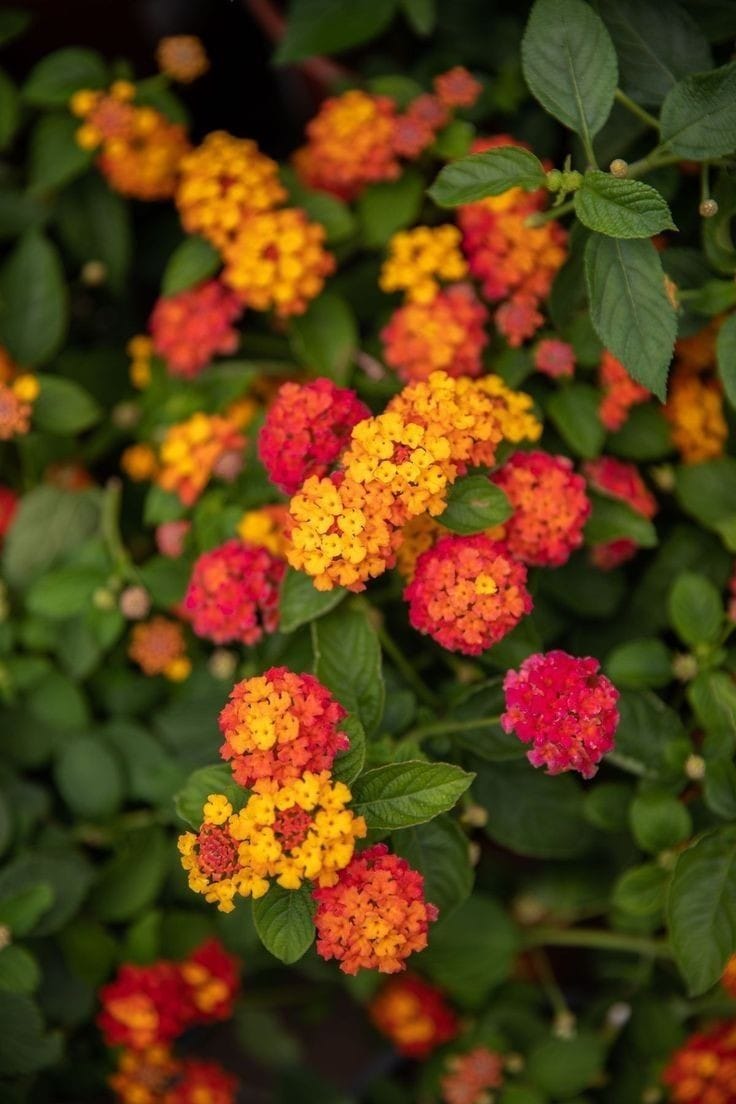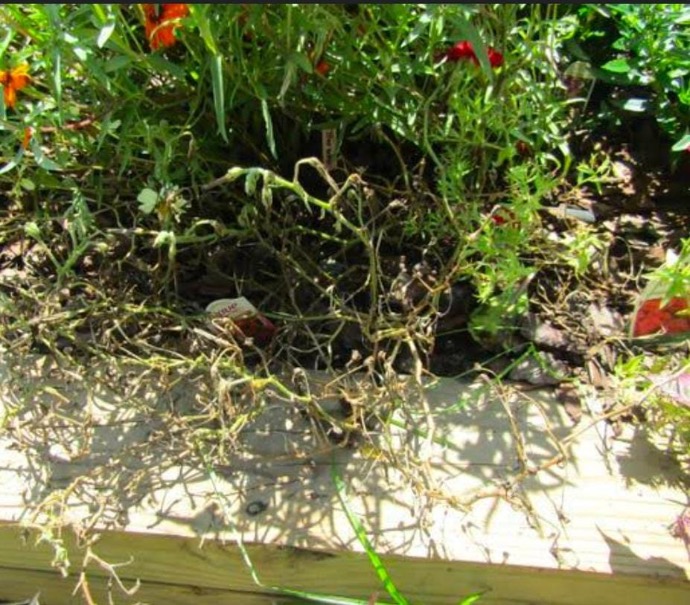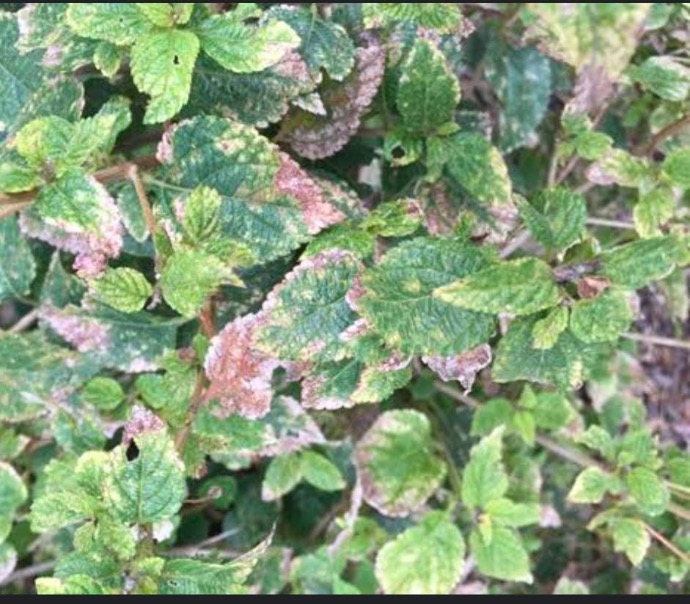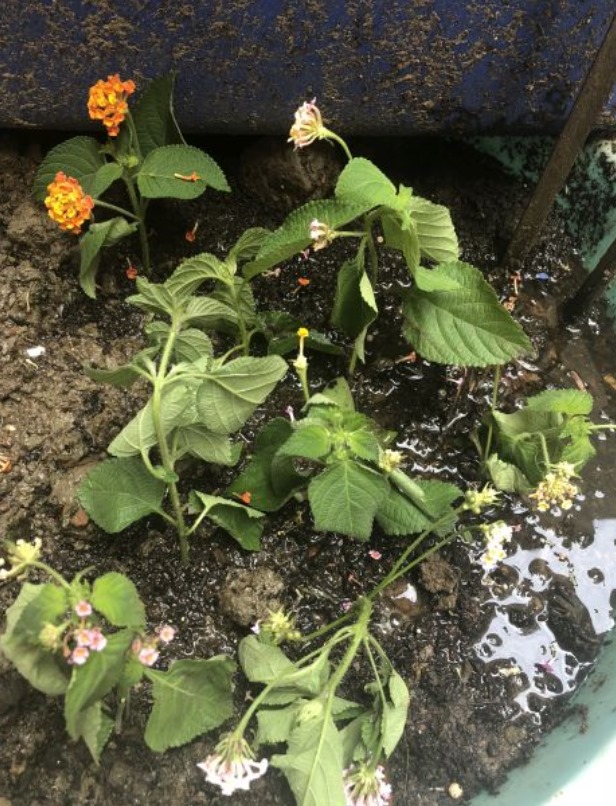Lantana Plant
Lantana, also known as Lantana camara, is an outdoor flowering shrub. Plant in well-draining soil with full sun exposure. Water consistently, and deadhead spent flowers for continuous blooming. Pruning helps maintain a compact and bushy appearance.
Habit
shrub
Height
1 to 1.5 m
Growth
Fast
Soil
Well-drained, Loamy
Shade
Full Sun
Moisture
Moist
Edible
No
Medicinal
No
Origin
Tropical
Climatic Condition
Tropical, Subtropical
Temperature (°)
20°C to 30°C
Humidity (%)
60% to 80%
Potting media
50% Loam, 30% Sand, 20% Compost
Fertilizers
Organic Fertilizer
Watering
Regular watering
Plant Weight
0.3 to 0.5 kg
Flowering Time
Spring to Summer
Soil Ph level
6.0 to 7.5
Water Ph level
6.0 to 7.0
Soil EC
0.6 to 1.0 mS/cm
Yield Per Plant
1 to 2 kg per plant
NPK ratio
10:10:10
life Span
3 to 5 years
Health Benefits
Ornamental, Skin Care (topically)
Suggested Grow Media or Potting Mix ?
50% loamy soil, 30% compost, 20% sand
Suggested Fertigation/Fertilizers
Fertilize every 4 weeks with a balanced fertilizer.
Common Diseases and Remedies
Root rot , sooty mould
waterlogging , over fertilization . Brown to black lown on excrement of aphids .
gribbing of small infestations , soak the affected plants in water and detergent mixture.
HEALTH BENEFITS
Used in traditional medicine for wound healing and respiratory issues but can be toxic in large amounts.
What Is An Lantana Plant ?
Lantana is a genus of flowering plants in the Verbenaceae (Verbenaceae) family. These plants are native to tropical regions of the Americas and Africa, but are widely cultivated as ornamentals around the world for their colourful flowers and ability to attract butterflies and hummingbirds. Lantana plants are known for their small, colourful clusters of flowers that bloom in various shades of red, orange, yellow, pink, and purple.

What Are The Different Types Of Lantana Plants?
1. Lantana camara
The most commonly cultivated species, known for its dense clusters of colorful flowers. There are several varieties with different flower colors, including red, orange, yellow, pink, and purple.
2. Lantana montevidensis
This species is also known as hanging lantana or purple trailing verbena. It is pendulous and produces clusters of small lavender or purple flowers. Often used as a ground cover or hanging basket.
3. Lantana depressa
Native to Florida, this short species has a spreading habit and produces small clusters of pink, lavender, or white flowers. Often used as a groundcover in sunny locations.
4. Lantana involucrata
This species is also known as wild sage or wild sage. Native to the Caribbean, it produces clusters of small white or pale pink flowers. It is prized for its fragrant leaves and is often used in butterfly gardens.
5. Lantana 'New Gold'
This variety is known for its prolific flowering and bright golden yellow flowers. They are a popular choice for adding vibrant color to gardens and landscapes.

How to Care Lantana Plant ?
1. Location
Lantana is a relatively low maintenance plant once established, but will benefit from occasional pruning to encourage bush growth and continued flowering. Whether planted in flower beds, borders, containers, or hanging baskets, lantana makes a great addition to sunny gardens and landscapes because it provides vibrant colour and attracts butterflies and hummingbirds.
2. Sunshine
Sunlight is essential for the healthy growth and abundant flowering of lantana plants. When choosing a location to grow your lantana, it is important to choose a location that receives plenty of sunlight throughout the day. Lantana grows in full sun and requires at least 6 hours of direct sunlight to thrive. Planting your lantana in a sunny location will ensure that it receives the light energy it needs for photosynthesis. This is the process by which plants convert sunlight into energy to fuel growth and flower production.
3. Soil
Lantana plants prefer well-drained soils that are rich in organic matter and have a slightly acidic to neutral pH of 6.0 to 7.0. It is important not to compact the soil around the roots of the plant. Compaction can lead to poor drainage and inhibit root growth. If your soil is heavy or clayey, we recommend amending the soil by adding sand, perlite, or other materials to improve drainage and help loosen the soil.
4. Hydration
Hydration is very important for the health and vigour of lantana, especially during the growth and active flowering periods. Lantana is drought tolerant once established, but requires regular watering, especially in hot, dry weather. When watering lantana, it is important to water thoroughly to ensure that the water reaches the root system of the plant. Water at the base of the plant rather than overhead to prevent moisture-related disease and fungal problems.

5. Nourishment
Nutrition is essential for healthy growth and flowering of lantana. Proper nutrition will ensure that your lantana receives the essential nutrients it needs to grow and produce vibrant blooms. Regular fertilization is important, especially during the growing season, to provide nutrients to the soil and support vigorous growth. Choose a balanced, slow-release fertilizer specially formulated for flowering plants and apply according to the manufacturer's instructions.
6. Issues
Lantana plants are generally hardy and easy to care for, but they can sometimes develop problems that can affect their growth and appearance. A common problem is powdery mildew. This is a fungal disease that appears as a white powdery coating on the leaves and is often caused by high humidity and poor air circulation. Another problem is aphids, small insects that feed on plant sap, causing leaf distortion and honeydew secretion, which can attract ants and lead to sooty mould development. Additionally, spider mites can infest lantana, causing spots and yellowing on the leaves, especially in hot, dry conditions. And purple.
What are the Benefits of Lantana Plant ?
These flowers add beauty and visual interest to gardens, flower beds, borders, containers, and hanging baskets. Lantana flowers are rich in nectar and attract pollinators such as butterflies, bees, and hummingbirds. By planting lantana, gardeners can support pollinator populations and promote biodiversity in the garden. Once established, lantana plants are relatively drought tolerant and require minimal irrigation, making them suitable for landscapes in hot, dry climates and water-restricted areas. Lantana is easy to grow and care for, requiring little care once established. They tolerate a variety of soil types and grow in full sun with minimal fertilization. Lantana plants typically have a long flowering period from spring to fall, providing continuous color and interest to your garden throughout the growing season.

FAQs About Growing Lantana
1. Do lantana plants attract butterflies and hummingbirds ?
Yes, lantana plants are excellent attractants for butterflies, hummingbirds, and other pollinators. The colourful flowers produce abundant nectar and are a popular nectar source for pollination by insects and birds.
2. What soil does lantana prefer ?
Lantana prefers well-drained, highly fertile soil. It tolerates many different soil types, including sandy, loamy, and loamy soils, as long as they are well-drained. Enriching the soil with organic matter can improve soil structure and fertility.
3. Is lantana toxic to pets ?
Yes, the lantana plant is considered toxic if ingested by pets. The leaves and berries contain compounds that can cause gastrointestinal upset, vomiting, and diarrhea in dogs, cats, and other animals. To prevent accidental ingestion, keep lantana out of reach of pets.
4. Does the lantana plant need enough sun ?
Yes, lantana grows in full sun and to bloom profusely he needs at least 6 hours of direct sunlight per day. Plant in a location that receives full sunlight for optimal growth and flowering.
5. How to prune lantana ?
Pruning a lantana plant maintains its shape, promotes bush growth, and promotes continued flowering. Give the plant a new shape by removing spent flowers and cutting back long or overgrown branches. Pruning can be done throughout the growing season if necessary.


